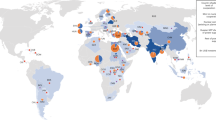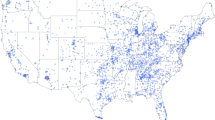Abstract
Dozens of countries have expressed an interest in acquiring nuclear power, but their doing so would also bring those countries closer to acquiring nuclear weapons. Iran’s nuclear programme provides a recent example of this unresolved tension. The 2015 Joint Comprehensive Plan of Action (known colloquially as the Iran deal) was a novel legal arrangement aimed at limiting the ability of Iran’s civil programme to be repurposed to make nuclear weapons. This article reviews the technical basis for the agreement and the ways in which a similar construct might be used to limit nuclear proliferation potential in other nuclear-newcomer nations. Specifically, agreements similar to the Iran deal could be used to establish rules for how a state may deploy certain sensitive technologies, provide for enhanced verification beyond what is currently required by international treaty, and provide for a ready-made response framework should a country decide to pursue nuclear weapons at a future point.
This is a preview of subscription content, access via your institution
Access options
Access Nature and 54 other Nature Portfolio journals
Get Nature+, our best-value online-access subscription
$29.99 / 30 days
cancel any time
Subscribe to this journal
Receive 12 digital issues and online access to articles
$119.00 per year
only $9.92 per issue
Buy this article
- Purchase on Springer Link
- Instant access to full article PDF
Prices may be subject to local taxes which are calculated during checkout
Similar content being viewed by others
References
International Status and Prospects for Nuclear Power in 2017 (International Atomic Energy Agency, 2017).
Deep Decarbonization Pathways Project Pathways to Deep Decarbonization 2015 Report (Sustainable Development Solutions Network and the Institute for Sustainable Development and International Relations, 2015).
United Nations Security Council Resolution 2231 (United Nations, 2015).
Hecht, G. The Radiance of France: Nuclear Power and National Identity after World War II (MIT Press, Cambridge, 2009).
Campbell, K. M., Einhorn, R. J. & Reiss, M. B. The Nuclear Tipping Point: Why States Reconsider Their Nuclear Choices (Brookings Institution Press, Washington DC, 2004).
Levite, A. E. Never say never again: nuclear reversal revisited. Int. Secur 27, 59–88 (2003).
Hymans, J. E. C. The Psychology of Nuclear Proliferation: Identity, Emotions, and Foreign Policy (Cambridge Univ. Press, Cambridge, 2006).
Nonproliferation and Arms Control Assessment of Weapons-Usable Fissile Material Storage and Excess Plutonium Disposition Alternatives 38–39 (US Department of Energy Office of Arms Control and Nonproliferation, 1997).
Summary Volume, International Nuclear Fuel Cycle Evaluation (INFCE) (International Atomic Energy Agency, 1980).
Rothwell, G. Market power in uranium enrichment. Sci. Glob. Secur 17, 132–154 (2009).
Barletta, M. The Military Nuclear Program in Brazil Working Paper (Center for International Security and Arms Control, Stanford University, 1997).
Sano, Y. Seoul, Tokyo, and the forbidden nuclear card. Asia Times (7 October 2004).
IAEA Safeguards Glossary (International Atomic Energy Agency, 2002).
Krass, A. S., Boskma, P., Elzen, B. & Smit, W. A. Uranium Enrichment and Nuclear Weapon Proliferation (Taylor & Francis, London, 1983).
Villani, S. (ed.) Uranium Enrichment (Springer-Verlag, Berlin Heidelberg, 1979).
Brown, A. & Glaser, A. On the origins and significance of the limit demarcating low-enriched uranium from highly enriched uranium. Sci. Glob. Secur 24, 131–137 (2016).
Cochran, T. B. & Paine, C. E. The Amount of Plutonium and Highly-Enriched Uranium Needed for Pure Fission Nuclear Weapons (Natural Resources Defense Council, New York, 2005).
Implementation of the NPT Safeguards Agreement in the Islamic Republic of Iran (International Atomic Energy Agency, 2003).
Lamarsh, J. R. Introduction to Nuclear Reactor Theory (American Nuclear Society, LaGrange Park, 2002).
Benedict, M., Pigford, T. H. & Levi, H. W. Nuclear Chemical Engineering (McGraw-Hill, New York, 1981).
Kemp, R. S. Two methods for converting a heavy-water research reactor to use low-enriched-uranium fuel to improve proliferation resistance after startup. Energy Technol. Policy 2, 39–46 (2015).
Long, J. T. Engineering for Nuclear Fuel Reprocessing (American Nuclear Society, LaGrange Park, 1978).
Implementation of the NPT Safeguards Agreement and Relevant Provisions of Security Council Resolutions in the Islamic Republic of Iran (International Atomic Energy Agency, 2011).
Final Assessment on Past and Present Outstanding Issues Regarding Iran’s Nuclear Programme (International Atomic Energy Agency, 2015).
Bowen, W. & Moran, M. Iran’s nuclear programme: a case study in hedging? Contemp. Secur. Policy 35, 26–52 (2014).
Iran: Nuclear Intentions and Capabilities (National Intelligence Council, 2007).
Collins, C. & Frantz, D. Fallout: The True Story of the CIA’s Secret War on Nuclear Trafficking (Free Press, New York, 2011).
Falliere, N., O Murchu, L. & Chien, E. W32.Stuxnet Dossier (Symantec, 2011).
Langner, R. To Kill a Centrifuge (The Langner Group, 2013).
Office of the Press Secretary, White House. Fact sheet: first step understandings regarding the Islamic Republic of Iran’s nuclear program. The White House https://obamawhitehouse.archives.gov/the-press-office/2013/11/23/fact-sheet-first-step-understandings-regarding-islamic-republic-iran-s-n (2013).
Implementation of the NPT Safeguards Agreement and Relevant Provisions of Security Council Resolutions in the Islamic Republic of Iran (International Atomic Energy Agency, 2013).
Kemp, R. S. The end of Manhattan: how the gas centrifuge changed the quest for nuclear weapons. Technol. Cult 53, 272–305 (2012).
Willig, T. M., Futsaether, C. & Kippe, H. Converting the Iranian heavy water reactor IR-40 to a more proliferation-resistant reactor. Sci. Glob. Secur 20, 97–116 (2012).
Ahmad, A., von Hippel, F., Glaser, A. & Mian, Z. A win–win solution for Iran’s Arak reactor. Arms Control Today 44, 8–13 (2014).
Burr, W. The Algerian nuclear problem, 1991: controversy over the Es Salam nuclear reactor. National Security Archive, Electronic Briefing Book No. 228 https://nsarchive2.gwu.edu/nukevault/ebb228/index.htm (2007).
Habib, B. et al. Stemming the Spread of Enrichment Technology (Woodrow Wilson School of Public and International Affairs, Princeton Univ., Princeton, 2006).
Global Fissile Materials Report 2006 (International Panel on Fissile Materials, 2006).
Author information
Authors and Affiliations
Corresponding author
Additional information
Publisher’s note: Springer Nature remains neutral with regard to jurisdictional claims in published maps and institutional affiliations.
Rights and permissions
About this article
Cite this article
Kemp, R.S. The Iran nuclear deal as a case study in limiting the proliferation potential of nuclear power. Nat Energy 4, 99–106 (2019). https://doi.org/10.1038/s41560-019-0325-2
Received:
Accepted:
Published:
Issue Date:
DOI: https://doi.org/10.1038/s41560-019-0325-2
This article is cited by
-
Gamma noise to non-invasively monitor nuclear research reactors
Scientific Reports (2024)



